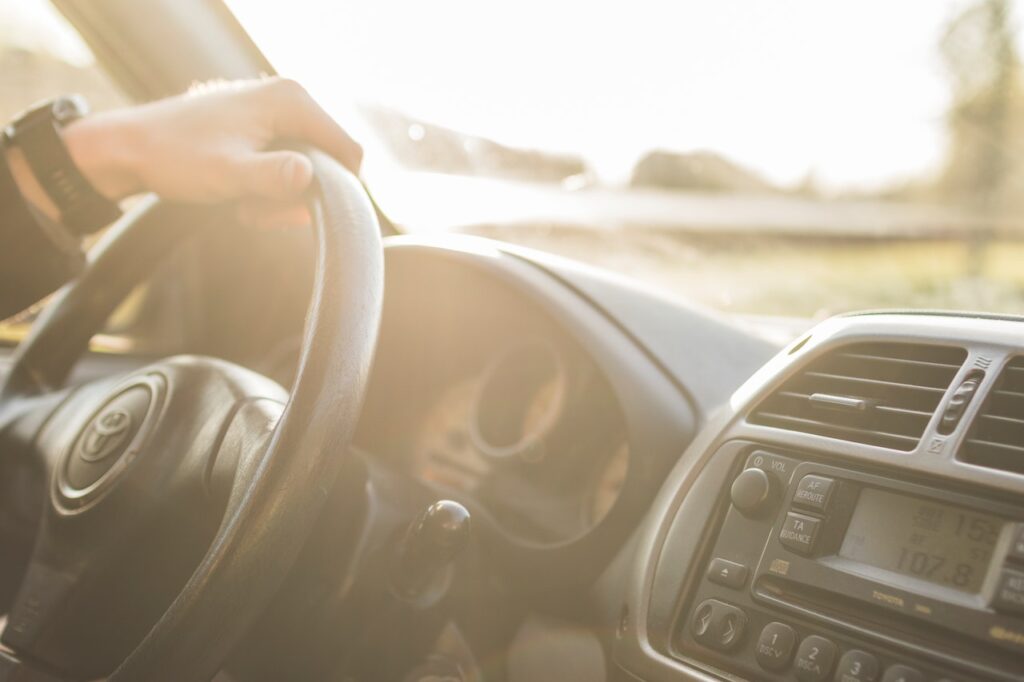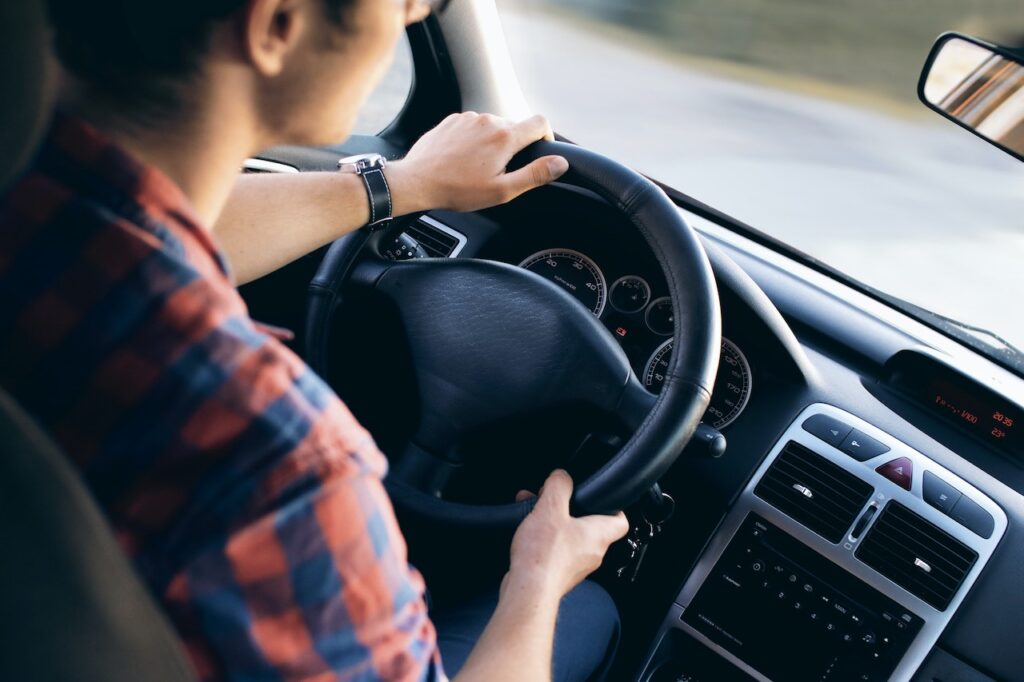Driving in Ireland Tips: A Comprehensive Guide for Tourists

Driving in Ireland can be a thrilling and unforgettable experience, but it can also be challenging for those who are not familiar with the country’s roads and driving rules. To ensure a safe and enjoyable trip, it is important to have a good understanding of the unique aspects of driving in Ireland. This article provides tips and advice for those planning to drive in Ireland, including car rental tips, road types and navigation, driving rules and regulations, fuel and maintenance, and more.
Understanding the nuances of driving in Ireland is crucial before embarking on a road trip. Car rental tips, such as choosing the right car and insurance, can help ensure a smooth rental experience. Road types and navigation can be confusing for those not used to driving on the left side of the road, and understanding the different types of roads and signage is essential. Knowing the driving rules and regulations, including speed limits and seatbelt laws, can help avoid fines and penalties. Additionally, it is important to be aware of fuel and maintenance options, as well as the different types of vehicles and transmissions available for rent.
Key Takeaways
- Understanding the unique aspects of driving in Ireland is crucial for a safe and enjoyable trip.
- Car rental tips, road types and navigation, driving rules and regulations, fuel and maintenance, and vehicle types and transmission are important factors to consider.
- Planning ahead and being aware of common mistakes can help ensure a smooth driving experience in Ireland.

Understanding Driving in Ireland
Driving in Ireland can be a challenge for those who are not used to driving on the left side of the road. It is important to understand the rules of the road and be aware of local driving customs to ensure a safe and enjoyable driving experience.
In Ireland, cars drive on the left-hand side of the road, and the driver’s seat is on the right-hand side of the car. This can be confusing for drivers who are used to driving on the right-hand side of the road, but it is important to remember that the driver should always be closest to the center of the road.
When driving in Ireland, it is important to pay attention to road signs and follow the speed limit. The speed limit is generally 50 km/h in urban areas and 100 km/h on highways, but it can vary depending on the road and the conditions. It is also important to be aware of narrow roads, sharp turns, and steep inclines, particularly in rural areas.
American drivers should be aware that the roads in Ireland are generally narrower than in the United States, and many roads are not divided by a median. It is important to be cautious when passing other vehicles and to be aware of oncoming traffic.
Overall, driving in Ireland can be a rewarding experience for those who take the time to understand the rules of the road and respect local driving customs. By following these tips and driving with caution, drivers can enjoy the beautiful scenery and historic landmarks that Ireland has to offer.
Car Rental Tips
Renting a car in Ireland is a popular way to explore the country. Here are some tips to make your car rental experience smoother:
Choose the Right Rental Car Company
There are many rental car companies in Ireland, so make sure to choose a reputable one. Look for companies with good reviews and a transparent rental process. Some popular rental car companies in Ireland include Hertz, Avis, and Budget.
Check Your Credit Card Coverage
Before renting a car, check if your credit card offers rental car insurance. Many credit cards offer collision damage waiver (CDW) coverage, which can save you money on rental insurance. However, make sure to read the terms and conditions of your credit card coverage carefully.
Consider Rental Insurance
If your credit card doesn’t offer rental car insurance, consider purchasing rental insurance from the rental car company. Rental insurance can provide peace of mind in case of an accident or damage to the car.
Understand Collision Damage Waiver (CDW)
CDW is a type of rental insurance that covers damage to the rental car. However, CDW often comes with a high deductible, which means you’ll have to pay a certain amount out of pocket before the insurance kicks in. Consider purchasing a lower deductible or upgrading to a higher level of coverage if you’re concerned about the deductible.
Upgrade for Comfort and Safety
Consider upgrading to a larger car for more comfort and safety on the road. A larger car can provide more space for passengers and luggage, and can also be safer in case of an accident.
Overall, renting a car in Ireland can be a great way to explore the country. By following these tips, you can make sure your car rental experience is smooth and stress-free.

Road Types and Navigation
Driving in Ireland can be an enjoyable and memorable experience, but it is important to be aware of the different road types and navigation methods.
In Dublin, there are many one-way streets, so it is important to pay attention to road signs and follow the flow of traffic. Motorways are typically well-maintained and have multiple lanes, while toll roads require payment at designated booths.
For those embarking on a road trip, country roads can be narrow and winding, so it is important to drive with caution and be aware of oncoming traffic. The Wild Atlantic Way and Ring of Kerry are popular routes, but drivers should be prepared for narrow roads and sharp turns.
In Northern Ireland, road signs may differ from those in the Republic of Ireland, so it is important to pay attention to the signage and follow the rules of the road.
National roads are typically well-maintained and have higher speed limits, while regional and local roads may be narrower and have lower speed limits. Rural roads may also have livestock crossings, so drivers should be aware of their surroundings.
Secondary roads may be more challenging to navigate, as they can be narrower and have more twists and turns. Toll roads in Ireland require payment at designated booths, and drivers should be prepared with cash or a toll tag.
When navigating, GPS and Google Maps can be useful tools, but drivers should also be aware of their surroundings and follow road signs. In small towns, it may be helpful to ask locals for directions or use a paper map.
Overall, drivers should be confident and knowledgeable about the different road types and navigation methods in Ireland, and always prioritize safety while on the road.
Driving Rules and Regulations
When driving in Ireland, it is important to be aware of the rules and regulations that apply on the roads. Here are some key points to keep in mind:
- Roundabouts: Ireland has a lot of roundabouts, and they can be confusing for drivers who are not used to them. Remember to give way to traffic already on the roundabout, and always indicate your exit.
- Traffic: Traffic can be heavy in urban areas, especially during rush hour. Plan your journey accordingly, and be patient if you get stuck in traffic.
- Speed limits: The speed limit in Ireland is generally 50 km/h in urban areas and 80 km/h on rural roads. On motorways, the limit is 120 km/h. Be sure to obey the speed limit, as there are strict penalties for speeding.
- Right of way: In Ireland, traffic coming from the right has right of way at uncontrolled intersections. Be sure to yield to oncoming traffic when turning right, and always be aware of other vehicles on the road.
- Traffic lights: Traffic lights are common in urban areas, and it is important to obey them. Remember that a flashing amber light means to proceed with caution, and a flashing red light means to stop and proceed only when it is safe to do so.
- Seat belts: It is mandatory for all passengers in a vehicle to wear a seat belt. Failure to do so can result in a fine.
- Cell phones: It is illegal to use a handheld mobile phone while driving in Ireland. If you need to make a call, use a hands-free device.
- Drinking and driving: It is illegal to drive under the influence of alcohol in Ireland. The legal limit is 50 mg of alcohol per 100 ml of blood, or 22 micrograms of alcohol per 100 ml of breath. Penalties for drink driving can be severe, including fines, driving bans, and even imprisonment.
By following these rules and regulations, drivers can ensure a safe and enjoyable journey on the roads in Ireland.

Fuel and Maintenance
When driving in Ireland, it’s important to keep your vehicle fueled up and well-maintained. Here are a few tips to keep in mind:
Fuel
Gas stations in Ireland are known as petrol stations, and they generally offer unleaded petrol, diesel, and sometimes LPG (liquefied petroleum gas). It’s important to know what type of fuel your vehicle requires before filling up, as using the wrong type of fuel can cause serious damage to your engine. If you’re unsure, check your owner’s manual or ask the rental company.
Petrol prices in Ireland can be quite high, so it’s a good idea to shop around for the best prices. You can use websites or apps like Pumps.ie or FuelPrices.ie to find the cheapest petrol stations in your area.
Maintenance
Regular maintenance is key to keeping your vehicle running smoothly on Ireland’s roads. Before setting off on a long journey, it’s a good idea to check the following:
- Oil level
- Coolant level
- Brake fluid level
- Tire pressure and tread depth
- Windshield wiper fluid level
- Lights and indicators
If you’re renting a car, be sure to check the rental agreement for any maintenance requirements or restrictions.
In the event of a breakdown, you can call the AA or RAC for assistance. Be sure to have your rental agreement and insurance documents on hand.
Remember, safe and responsible driving starts with a well-maintained vehicle.
Vehicle Types and Transmission
When renting a vehicle in Ireland, it is important to consider the type of transmission you are comfortable with. The most common types of transmission in Ireland are manual and automatic. Manual transmission vehicles, also known as stick shift, require the driver to manually shift gears using a clutch pedal and a gear stick. Automatic transmission vehicles, on the other hand, shift gears automatically without the need for a clutch pedal or gear stick.
If you are used to driving a manual transmission vehicle, you will have no trouble finding one to rent in Ireland. However, if you are not comfortable with a manual transmission, it is recommended to rent an automatic transmission vehicle. Keep in mind that automatic transmission vehicles may be more expensive to rent than manual transmission vehicles.
Another factor to consider when renting a vehicle in Ireland is the type of wheel and gear system. Most vehicles in Ireland have the steering wheel on the right-hand side of the vehicle, which may take some getting used to if you are used to driving on the left-hand side of the road. Additionally, some vehicles in Ireland have a six-speed gear system, while others have a five-speed system. It is important to familiarize yourself with the gear system of your rental vehicle before hitting the road.
Overall, it is important to choose a vehicle with a transmission and gear system that you are comfortable with when driving in Ireland. Whether you prefer a manual or automatic transmission, taking the time to familiarize yourself with your rental vehicle before driving can help ensure a safe and enjoyable trip.

Planning Your Trip
When planning a driving trip in Ireland, there are several things to consider to ensure a comfortable and enjoyable vacation. Tourists should begin by creating a packing list to ensure they have everything they need for the trip. This should include warm clothing, rain gear, comfortable walking shoes, and any necessary medications.
Budget is also an important consideration when planning a trip to Ireland. Tourists should research the cost of accommodations, attractions, and transportation to ensure they have enough money for the trip. Travel insurance is also recommended to provide peace of mind in case of any unforeseen circumstances.
Freedom is one of the biggest advantages of driving in Ireland, as it allows tourists to explore the country at their own pace and visit attractions that may not be accessible by public transportation. However, it is important to note that driving in Ireland can be challenging due to narrow roads and driving on the left side of the road. Tourists should ensure they are comfortable with driving in these conditions before embarking on a road trip.
When choosing accommodations, tourists should consider their budget and the location of the attractions they wish to visit. Bed and breakfasts are a popular choice in Ireland, as they offer a comfortable and authentic experience. However, there are also many hotels and hostels available for those on a budget.
Finally, tourists should ensure they have enough coins on hand for toll roads and parking. It is also recommended to carry a credit card for larger purchases. By considering these factors, tourists can plan a successful driving trip in Ireland.
Driving in Different Locations
Driving in different locations can be a challenge, especially if you are not familiar with the area. In the Republic of Ireland, driving is done on the left side of the road, which can be a significant adjustment for those used to driving on the right side. However, the roads in Ireland are well-maintained and easy to navigate, so with a little practice, driving in Ireland can be a breeze.
In Canada and the United States, driving is done on the right side of the road, so visitors from Ireland or other countries where driving is done on the left side may need to take some time to adjust. It is also important to note that speed limits are posted in kilometers per hour in Canada and the European Union, while in the United States, they are posted in miles per hour.
When driving in the European Union, it is important to be aware of the different driving laws and regulations that may differ from those in your home country. For example, in some countries, it is mandatory to carry certain items in your car, such as a reflective vest or a warning triangle. It is also important to be aware of different road signs and markings that may be unfamiliar.
In rural areas of Ireland, it is not uncommon to encounter sheep or other livestock on the road, so it is important to drive cautiously and be prepared to stop if necessary. Additionally, some roads in Ireland may be narrow, so it is important to be aware of oncoming traffic and to pull over if necessary to allow other vehicles to pass.
Overall, when driving in different locations, it is important to be confident and knowledgeable about the local driving laws and regulations. By being aware of your surroundings and taking the necessary precautions, you can ensure a safe and enjoyable driving experience.
Common Mistakes and How to Avoid Them
Driving in Ireland can be a challenging experience, especially for those who are not used to driving on the left side of the road. However, by being aware of some of the common mistakes that drivers make, you can avoid making the same errors and ensure a safer and more enjoyable journey.
Mistake #1: Not Adjusting to the Left Side of the Road
One of the most common mistakes that drivers make when driving in Ireland is not adjusting to the left side of the road. This can lead to accidents, as drivers may instinctively drift towards the right side of the road, which can be dangerous, especially on narrow roads.
To avoid this mistake, drivers should take their time to get used to driving on the left side of the road. They should also pay attention to road signs and markings, as they may be different from what they are used to.
Mistake #2: Not Paying Attention to Speed Limits
Another common mistake that drivers make when driving in Ireland is not paying attention to speed limits. This can lead to accidents, as drivers may be driving too fast for the conditions, which can be dangerous, especially on winding roads.
To avoid this mistake, drivers should pay attention to speed limit signs and adjust their speed accordingly. They should also be aware of the weather conditions, as speed limits may be reduced during adverse weather conditions.
Mistake #3: Not Yielding to Other Drivers
Not yielding to other drivers is another common mistake that drivers make when driving in Ireland. This can lead to accidents, as drivers may be driving too fast and not giving way to other drivers, which can be dangerous, especially on narrow roads.
To avoid this mistake, drivers should be aware of other drivers on the road and yield to them when necessary. They should also be aware of the rules of the road, as they may be different from what they are used to.
Liability and Damages
It is important to note that if you are involved in an accident while driving in Ireland, you may be liable for any damages or injuries that occur. Therefore, it is important to drive safely and responsibly at all times.
In conclusion, by being aware of some of the common mistakes that drivers make when driving in Ireland, you can avoid making the same errors and ensure a safer and more enjoyable journey.
Additional Resources
For those looking for more information on driving in Ireland, there are a variety of resources available online. Here are a few options to consider:
- RSA.ie: The Road Safety Authority of Ireland offers a wealth of information on driving in Ireland, including rules of the road, licensing requirements, and safety tips. They also have a dedicated section for tourists visiting Ireland.
- YouTube: There are a number of YouTube channels that offer tips and advice for driving in Ireland. One popular option is the “Irish Driver’s Guide” channel, which covers everything from roundabouts to driving on narrow roads.
- Instagram: If you’re looking for some visual inspiration for your Irish road trip, check out the “Ireland’s Gems” Instagram page. They share stunning photos of Ireland’s scenic drives and hidden gems.
- Uber in Ireland: While Uber is available in Ireland, it’s important to note that it may not be available in all areas. Additionally, Uber drivers in Ireland are required to hold a valid taxi license.
- Trunk.ly: This website offers a curated list of resources for driving in Ireland, including blogs, articles, and videos.
Overall, there are plenty of resources available to help you prepare for your Irish road trip. Whether you’re a seasoned driver or a first-time visitor, it’s important to do your research and be aware of the unique challenges of driving in Ireland.
Frequently Asked Questions
What are some tips for driving in Ireland as a tourist?
Tourists driving in Ireland should be aware that driving is on the left side of the road. It’s important to take your time and adjust to this change, especially when turning or changing lanes. Additionally, narrow roads and roundabouts can be challenging, so it’s important to be patient and stay alert. It’s also recommended to use a GPS or map to navigate, as some roads may not be well-marked.
Can I use my US driver’s license to drive in Ireland?
Yes, US driver’s licenses are recognized in Ireland. However, it’s recommended to obtain an International Driver’s Permit (IDP) as a backup, as some car rental companies may require it.
What are the requirements for driving in Ireland with a foreign license?
Drivers with a foreign license can drive in Ireland for up to 12 months, as long as the license is valid and the driver meets the minimum age requirements. However, it’s recommended to obtain an IDP as a backup, as some car rental companies may require it.
What should I know about driving an SUV in Ireland?
Driving an SUV in Ireland can be challenging due to narrow roads and tight parking spaces. It’s important to be aware of the vehicle’s size and to take extra care when navigating through tight spaces. Additionally, SUVs can be more expensive to rent and may use more fuel than smaller vehicles.
What are some tips for passing the driving test in Ireland?
To pass the driving test in Ireland, it’s important to practice and become familiar with the rules of the road. It’s also recommended to take driving lessons from a qualified instructor, as they can provide valuable feedback and advice. During the test, it’s important to stay calm and focused, and to follow the examiner’s instructions carefully.
How has Brexit affected driving in southern Ireland?
Brexit has not affected driving in southern Ireland, as it is a separate country from Northern Ireland, which is part of the United Kingdom. However, drivers traveling between the two regions should be aware of different road signs and speed limits.


